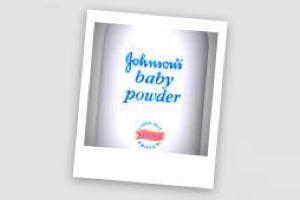Talcum Powder and Ovarian Cancer Risk
What is Talcum Powder?
Talcum powder is made from talc, a mineral made up magnesium, silicon, and oxygen.

As a powder, it absorbs moisture and cuts down on friction, keeping skin dry and helping to prevent rashes. It is widely used in cosmetic products such as baby powder and body and facial powders.
In its natural form, talc may contain asbestos, a substance known to cause cancers in and around the lungs when inhaled. All home-use talcum products in the United States have been asbestos-free since the 1970s.
Concerns about a link between talcum powder and cancer have been focused on women who apply talcum powder regularly in the genital area, is there an increased risk of ovarian cancer?
Does Talcum Powder cause Ovarian Cancer?
According to experts, talcum powder might cause ovarian cancer if the powder particles (applied to the genital area or on sanitary napkins, diaphragms, or condoms) were to travel through the vagina, uterus, and fallopian tubes to the ovary.
Studies in women have looked at the possible link between talcum powder and cancer of the ovary. Findings are mixed, with some studies reporting an increased risk and some reporting no increase.
In one analysis combining data from 16 studies published before 2003 found about a 30% increase in ovarian risk among talc users. The average woman’s lifetime risk of ovarian cancer is about 1.4%, so even with a 30% increase, her lifetime risk would be about 1.8%.
One recent study suggested genital talcum powder use may slightly increase the risk of endometrial (uterine) cancer in women who are past menopause, but further studies are needed to explore this possible link.
What do Medical Experts say?
Several regulatory agencies study different substances in the environment to determine if they can cause cancer.
The International Agency for Research on Cancer (IARC) is part of the World Health Organization (WHO).
- IARC classifies talc that contains asbestos as “carcinogenic to humans”.
- Based on the lack of data from human studies and on limited data in lab animal studies, IARC classifies talc not containing asbestos as “not classifiable as to carcinogenicity in humans”.
- Based on limited evidence from human studies, IARC classifies the perineal (genital) use of talc-based body powder as “possibly carcinogenic to humans”.
The National Toxicology Program (NTP) is formed from parts of several different US government agencies, including the National Institutes of Health (NIH), the Centers for Disease Control and Prevention (CDC), and the Food and Drug Administration (FDA). The NTP has not fully reviewed talc (with or without asbestos) as a possible carcinogen.
Can I Reduce my Exposure to Talcum Powder?
Until more information is available, people concerned about using talcum powder may want to avoid or limit their use of consumer products that contain it.


